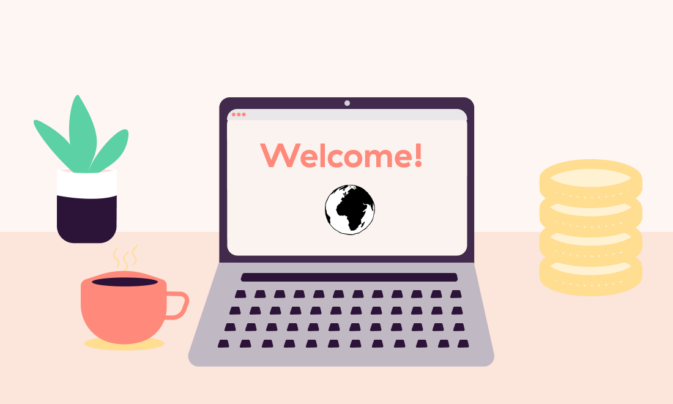Effective diversity, equity, and inclusion initiatives start before new hires even speak to someone at their future company. Everything begins with recruitment — at least, that’s how it should be.
Focusing on DEI in interviews attracts diverse candidates, showcasing your commitment to equality. As many as 76% of employees see DEI as a critical factor in choosing who to work for.
Moreover, diversity hiring is good business. Statistics show revenues at companies with diverse management teams are 19% higher than competitors. Given those figures, leaving DEI out of your recruitment strategy isn’t a risk worth taking.
Feeling like your DEI strategy could use a bit of a refresh (or kickstart)? These DEI tips will simplify inclusivity and help you plot your route to workplace diversity.
TL;DR — Key Takeaways
DEI stands for diversity, equity, and inclusion. Diversity involves removing bias from hiring decisions and celebrating differences instead of seeking sameness. Equity involves treating every employee equally, with no preferences or privileges. Inclusion means ensuring people from all cultures and backgrounds feel comfortable and secure in the workplace.
DEI strategies have many benefits. Companies can draw from a wider talent pool and they can focus on skills without polluting hiring decisions with sources of bias. Diverse organizations also enjoy increased morale and employee retention.
There are many ways to simplify DEI strategies. Tips include designing inclusive physical and virtual workplaces as well as celebrating religious and cultural diversity and empowering workers via employee resource groups.
One of the most productive DEI tips is creating unbiased, data-driven hiring processes. Skills tests can replace resumes as the first filtering mechanism, allowing HR teams to focus on candidates with appropriate skills.

What is DEI in the workplace?
DEI comprises three goals: diversity, equity, and inclusion. All three goals are interconnected, and the real power of DEI strategies lies in how diversity, equity, and inclusion reinforce each other.
Diverse workplace
Diversity is about celebrating and accommodating differences, including gender, age, race, religion, or sexual orientation. Nobody is excluded based on who they are.
Equitable workplace
Equity is about providing every employee with the same chance to thrive and succeed. Blind hiring, structured interviews, and anti-bias training ensure equitable hiring.
Inclusive workplace
Inclusion is the recognition of everyone as a valued team member and (in a broader sense) a unique human being. An inclusive workplace is a transparent workplace where everyone feels welcome.

The importance of a diverse workforce in today’s world
Before offering some top DEI tips, it’s helpful to understand why a diverse and inclusive workforce is beneficial. Benefits of strong DEI initiatives include:
Workers expect a strong DEI game. 92% of employees want managers to actively lead diversity initiatives and support employees to work more inclusively. 77% of Gen Z employees say they prefer to work at companies that share their ethical commitments. DEI is becoming normalized.
The workforce is becoming more diverse with every passing year. Gen Z is the most diverse generation in American history, with higher representation from ethnic minorities and gender diversity.
DEI helps you recruit the best people. Companies without established DEI programs lose the race for talent. Talent is spread across genders, races, sexual orientations, and even age. Biases or rigged selections ruin the chance of finding the best candidates.
DEI is an easy win. Research suggests only 29% of companies took action in the past year to show their commitment to DEI principles. This leaves plenty of room for proactive managers.
Beyond these reasons, prioritizing diversity, equity, and inclusion is the future. As human beings, we should all strive to treat people equally. Eradicating biases in hiring, management, and communication is the right thing to do.
Benefits of a diverse and inclusive workforce
Time spent on DEI almost certainly won’t be wasted.
As McKinsey reports, companies in the top quartile for gender and ethnic diversity significantly outperform competitors. AWS-sponsored research reports companies classed as DEI leaders increased their market share by 11.7% over the previous year.
DEI boosts revenues and improves your market position. But the benefits go further, extending to the quality of employee experience, team morale, and (eventually) the positive role your company plays in the world.

Broader talent pool
Diversity recruiting is a must in a highly competitive environment. Deloitte reports the US will experience a labor shortage of 8.2 million workers by 2027. With skilled labor supplies dwindling, reaching out to Gen Z job-seekers is essential.
Broadening your talent pool isn’t just a labor supply issue, though. Diversity also makes companies more attractive to potential hires.
As the workforce becomes more diverse, organizations with a reputation for diversity, equity, and inclusion will have a better choice of candidates and enjoy better hires (which equals less time wasted repeating the recruitment process).
Diverse perspectives
Companies with diverse workforces mobilize many experiences, cultural influences, and professional backgrounds. Diverse viewpoints make organizations more flexible and adaptable in the face of change, as diversity encourages innovation instead of relying on trusted techniques or approaches.
Diverse companies also tend to find problems easier to handle. As the saying goes, “A problem shared is a problem halved.”
Researchers have proved how true this is. One study of 150 business teams found teams with the highest cognitive diversity solved problems more quickly. The most successful teams operated in “psychologically safe” environments — exactly what inclusion seeks to provide.
Increased employee engagement
DEI initiatives boost employee engagement by ensuring team members are valued and respected — no matter their background. Managers waste less time defusing conflicts within their teams, and everyone can focus on working productively in a safe, welcoming environment.
Decreased turnover
DEI also encourages employees to stay longer instead of seeking more respectful and attentive employers. Valued employees tend to stay for longer, strengthening the company culture. Replacing is expensive, so well-designed DEI initiatives directly reduce running costs and boost profitability.
Enhanced innovation
Innovation is an overarching by-product of established DEI practices. Diversity encourages creativity and innovation because diverse teams are primed to think “outside the box.”
This process is easy to spot in the retail sector. Companies with more diverse workforces are better placed to understand consumer trends in fashion, electronics, or household goods. More viewpoints result in products tailored to diverse demographics.
DEI tips to power your DEI initiatives
Now, let’s move on to the heart of the matter: DEI tips and tricks to hone a winning DEI strategy.
When reading our tips, remember that DEI is not monolithic. It influences various business challenges, from recruitment and onboarding to managing diverse teams and retaining talent.
Because of this scope, not all of these DEI tips will apply to your situation. However, we will cover many bases, including inspirational and relevant ideas for every situation.
1. Create inclusive job descriptions
Start by revisiting the way you design and write job descriptions. Use inclusive language and be as clear as possible. Readers should understand what the role entails and the skills they need.
For example: “parental leave” is preferable to “maternity leave” as it appeals to both mothers and fathers. The pronouns they/you are more gender inclusive than he/she. Terms like “native” may sound innocent. However, they have exclusionary overtones to some ethnic minorities or foreign applicants.
Focus descriptions on concrete skills you can assess objectively. Don’t obsess about degrees or certificates. You might skip candidates with the skills you need but lack perfect paper credentials. Keeping requirements to a minimum expands your talent pool without alienating applicants.
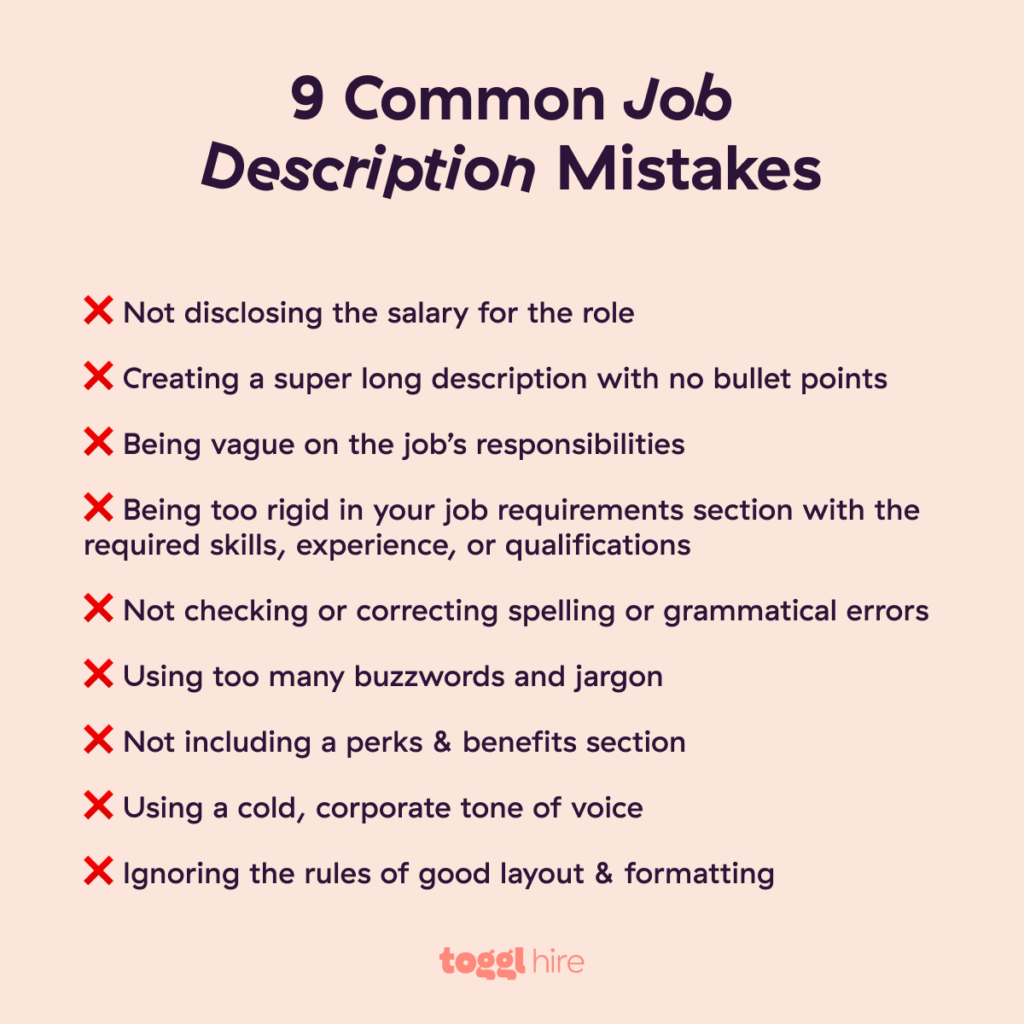
2. Update your DEI statement
A DEI statement outlines your leadership commitment to diversity, equity, and an inclusive workplace. It guides DEI practices and signals to candidates that you’re serious about building a more inclusive workplace culture for everyone.
Statements should use inclusive language and avoid being stiff or boring. Explain how DEI relates to your business values and mission. If relevant, include details about DEI practices, such as internal events or sponsoring community initiatives.
Run the statement by a diverse editing panel and ensure it’s easy to find on your website. Always link to the statement in job postings and update it regularly to reflect new ideas or DEI practices.
3. Post on diverse job boards
It’s easy to become a creature of habit where recruitment is concerned. However, big job boards like Indeed, Monster, or Linkedin share a major flaw: they aren’t very targeted. Recruiters on big-name boards often take a scattergun approach, while building a more diverse workforce requires precision.
Diversify your reach by including niche job boards in marketing campaigns. When looking for a specific skill or role, head for a job board specializing in a particular area, such as web development or market research.
Explore job boards like NoDesk for remote workers, or think about diversity-focused boards like the United Latinos Job Board and BlackCareerNetwork.
4. Use blind hiring tools
Blind hiring removes sources of unconscious bias right from the start. When you receive a candidate’s application, ask yourself two questions: What information is critically important? What information could inject bias into the process?
For instance, do you really need to see gender information when reviewing skills and previous experience? It’s highly unlikely! De-personalizing what the recruitment team sees removes opportunities to discriminate against characteristics such as age, race, and gender.
5. Level the playing field with skills tests
One of the best ways to remove any bias from the recruitment process is to replace traditional resume applications with skills tests.
Skills tests assess the skills, knowledge, and competence needed for a given role. Naturally, at Toggl Hire, we’re a little biased when it comes to skills testing because it’s what we do.
Our skills tests help teams focus on relevant soft skills and technical capabilities. Data-driven testing progresses top talent to interviews without introducing unconscious bias.
6. Use structured interviews
DEI requires fair treatment of every candidate, especially during interviews. Promote a consistent interview experience by assessing candidates on the same questions.
Structured interviews may be monotonous for recruiters and HR professionals, but they give everyone a fair chance to showcase their aptitude. Structured interviews also ease the selection process by generating better interview feedback and bolstering hiring decisions.
Use diverse panels featuring several interviewers to ask and assess candidate responses. Diverse panels ensure a balanced view of the candidate’s performance and build consensus as a team around the best hire.
7. Improve your employer brand
We know job seekers prioritize employers with a commitment to DEI. Companies, therefore, need an appealing message to promote their internal achievements and processes.
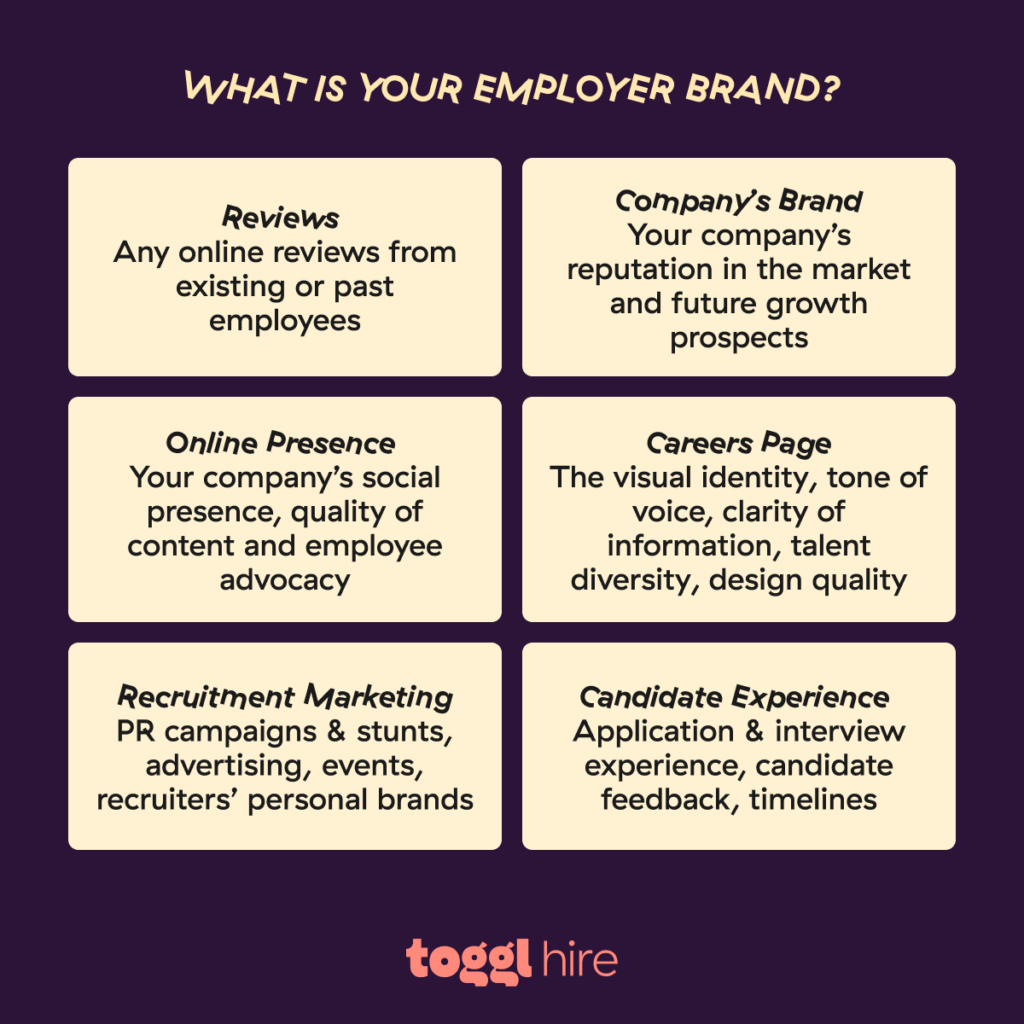
There are various ways to craft this message:
When your company celebrates a diversity day or promotes a previously disadvantaged individual, showcase the event on social media channels.
Celebrate the achievements of employees from ethnic or marginalized backgrounds. This shows genuine concern about diversity and inclusivity, and it puts a human face on DEI initiatives.
Balanced, strategic communication also helps. Convey how you guarantee equal opportunities, manage diversity, and promote a positive and inclusive company culture.
8. Diversify your hiring team
One solution to hiring bias is adopting a diversity recruiting strategy across all departments. Expand your hiring team with members from different backgrounds and skill sets.
We’re not saying you need to replace yourself. However, adding more co-workers to your interviewer panel can be very helpful.
Diversifying at the management level is also beneficial from a recruitment perspective. Diverse senior leaders indicate everyone can rise within the organization, not just people fitting the copy-and-paste look of the average CEO and c-suit.
9. Ask for candidate feedback
It’s important to understand if your interviews alienate certain groups or if tests feel exclusionary. So, always tell candidates their feedback is welcome and valued.
When you message candidates about the status of their application, include a link to a feedback form. Systematically mine the information for insights to apply in the future.
Thank failed candidates who provide valuable feedback and add them to your talent pool. They are familiar with your brand and should be keen to apply in the future as long as they had a great candidate experinece the first time around.
10. Provide unconscious bias training
Everyone can exhibit unconscious bias, and everyone needs training to identify and overcome it. Diversity training gets bad press sometimes (and it can be done horribly wrong), but education is an invaluable tool to build knowledge and encourage employees to reflect on DEI themes.
More than anything else, DEI training prompts staff to question their communication methods. Classes might uncover hidden biases in how managers structure projects and assign tasks.
11. Focus on “culture add” versus “culture fit”
DEI is about building an inclusive workplace culture. However, companies often forget building a culture takes time. Every new hire brings something new to the team, making the company culture more diverse and inclusive.
The best way to embed this change process is by focusing on “culture add,” not “culture fit.
“Culture add” focuses on whether candidates will diversify and enhance an internal culture via new ideas and perspectives. Promoting diversity is part of this, but asking strategic interview questions can also help you identify the right candidates for each position.
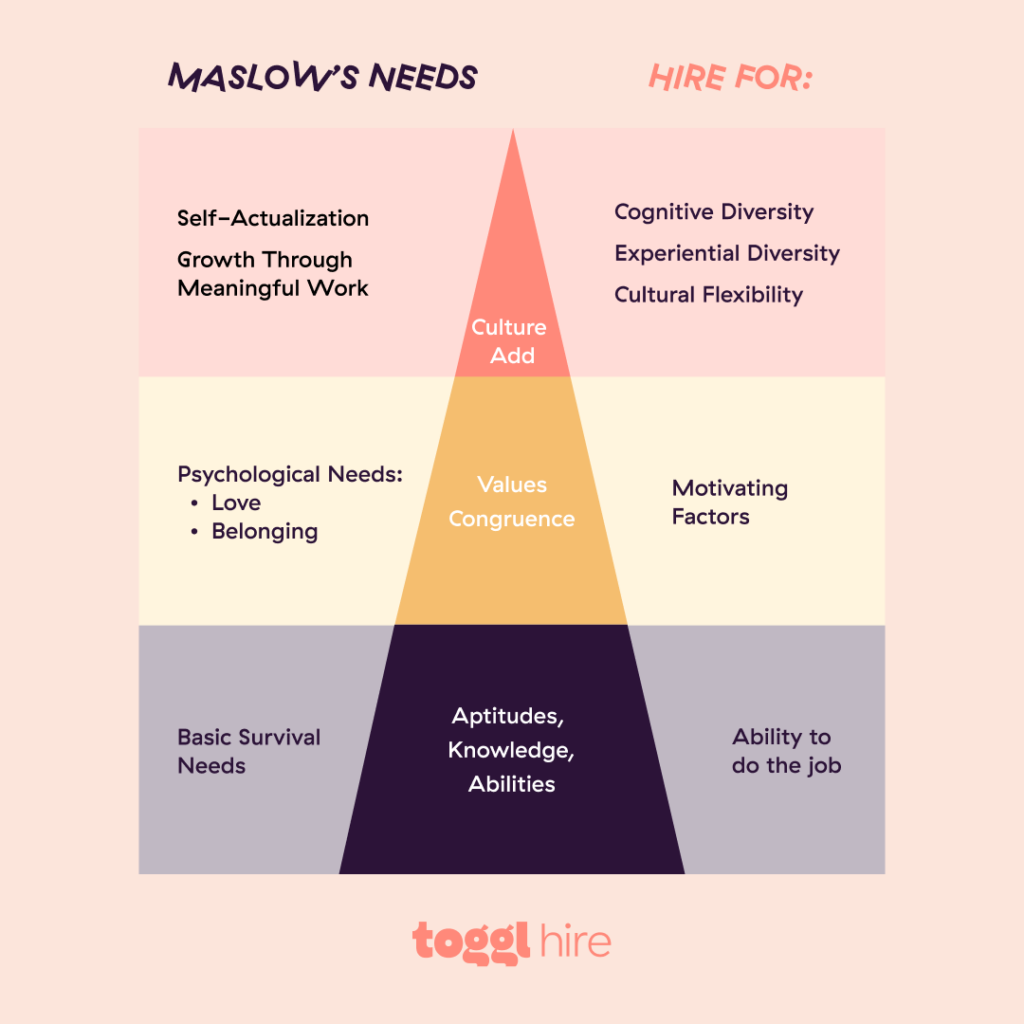
12. Respect cultural and religious practices
The following two DEI tips may seem obvious, but they’re critical to creating an inclusive culture. Inclusion initiatives should identify the cultural needs of employees.
Building a multi-faith prayer center in every workplace might not be necessary for your team, but setting aside quiet places for prayer and reflection is a good idea. Or, some workers may be vegetarian for religious reasons. If you hold group meals, menus should cater to all diets.
13. Celebrate cultural holidays
Companies should also schedule events around cultural festivals or holidays. Encourage employees to share culturally specific cuisines. Adopt one-day dress codes to suit the occasion, and set aside time for music, dance, or art to celebrate the event.
A smart DEI strategy links cultural holidays to the employer value proposition. Give employees the option of taking religious holidays off, and mention this applies to every community when you promote new positions.
14. Encourage open communication
Communication is a core DEI challenge. We’ve discussed using inclusive language. However, inclusion is only part of the problem. Openness is just as important, and making communication transparent requires concrete actions.
Train managers to welcome honest dialogue about social or cultural issues. Schedule team-wide meetings if employees flag potential discrimination incidents, and never sweep DEI issues under the carpet.
15. Learn to listen
None of these DEI tips mean anything if you’re unwilling (or unable) to listen to employee feedback about them.
Create confidential communication channels and respond promptly when employees use them. When you meet with concerned workers, let them lead the conversation. Try not to impose solutions or encourage staff to soldier on regardless.
Integrate listening into DEI training via workshops and peer-to-peer roleplays. Embed listening into the organization with employee panels so everyone and every community has a voice.
16. Mix generations within teams
Age is an often overlooked aspect of diversity, equity, and inclusion. However, age and youth bring different (and valuable) perspectives.
When you build teams, try to include a mixture of ages and experience levels. If your team is inexperienced, bring senior leaders in as consultants to advise and encourage younger members.
17. Provide physical and psychological safety
Inclusion demands a safe, comfortable environment. Ensuring safety is both a physical and a psychological challenge. Strong DEI leaders understand both factors contribute to an inclusive environment.
Harness your occupational safety policies to ensure all workstations and environments suit individual requirements. Assess working hours and workloads to verify everyone receives the same treatment and take any complaints seriously.
18. Offer inclusive rewards and benefits
Benefits aren’t just great ways to entice and invest in new hires. They show leadership commitment, help build a DEI-friendly employer brand, and make working life easier for existing employees.
Examples include generous parental leave for all genders, hassle-free approval for medical appointments, and cost-free services to accommodate disabilities.
19. Conduct a pay equity audit
Pay is a common DEI pain point, which is no surprise. Even within individual companies, the gender pay gap remains depressingly wide.
Don’t emulate the worst equity offenders. The most inclusive companies constantly examine compensation policies to close pay gaps based on gender, sexual orientation, or race.
20. Take advantage of focus groups
Focus groups are commonly used in the political world to analyze public opinion. But you can (and should) use them internally to canvas employee opinions.
Focus groups work well because they offer safe spaces to discuss issues of importance to employees.
Of course, focus groups only help if you use employee feedback wisely. Assess suggestions and employee satisfaction and then translate the findings into concrete actions to achieve DEI goals.
21. Encourage participation in employee resource groups
Employee resource groups are open to all and managed by individuals from underrepresented groups. They empower workers and identify potential inclusion ideas, providing insights about fine-tuning DEI efforts.
Employee resource groups also enable participation and discussion. Members can organize cultural events, get to know each other, and exchange ideas.
22. Provide DEI training for senior leadership
Earlier, we mentioned the need to provide unconscious bias training for all. However, executives have a unique role in the DEI ecosystem. Their training should be more comprehensive and focus on inclusive leadership.
Executive training enables leaders to set the right tone for the whole organization. It covers issues like legal compliance that are less relevant to ordinary team leaders. Training also enfolds senior managers into the wider workforce, ensuring everyone meets the same DEI standards.
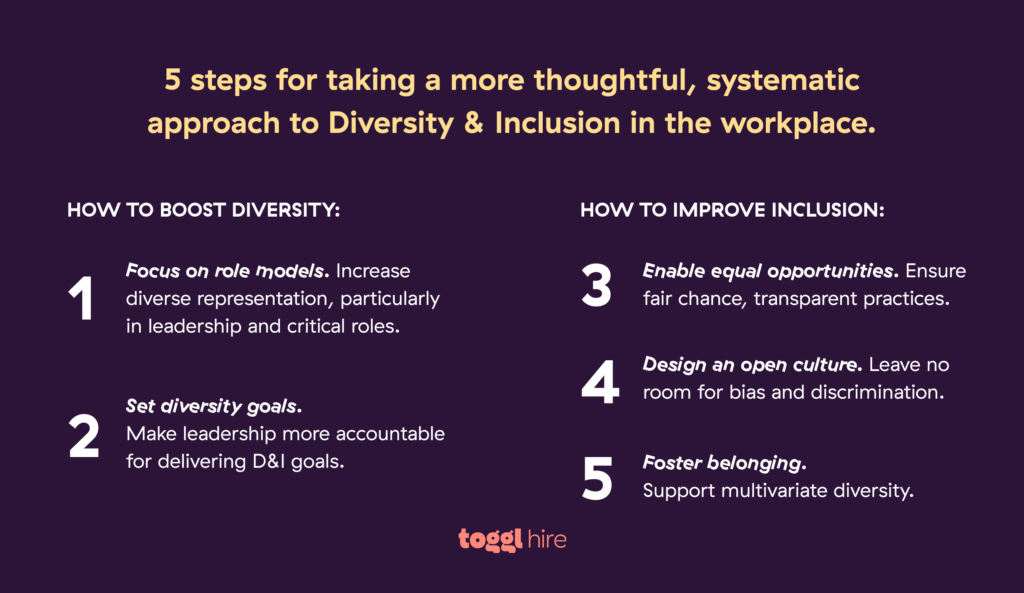
23. Create a diversity and inclusion committee
The idea of setting up another committee may make you roll your eyes. However, DEI strategies can’t prosper without an efficient diversity and inclusion committee.
Members come from every department and cultural or gender group to assess DEI measures and recommend improvements to promote diversity and employee inclusion. In other words, diversity and inclusion committees are the steering wheel of your DEI strategy.
24. Promote mentorship and sponsorship programs
Career advancement is a core component of DEI strategies. Everyone should have the same promotion opportunities. The problem is those from underrepresented groups are often less confident. Lowered ambition is a common consequence.
Mentoring and sponsorship can solve this issue. For example, mentorship programs could enlist experienced managers from diverse backgrounds to take new hires under their wing and advise them about DEI training, professional development, and other important issues.
25. Design inclusive workplaces
DEI is as much a design problem as an organizational and social practice. Both on-premises offices and virtual spaces must ensure equal access for all.
In the physical work environment, height-adjustable desks, on-site elevators, ramps, and wheelchair-accessible facilities all play a role.
Virtual spaces should be open to everyone, too. If you have partially-sighted employees, cut back on visuals and include clear verbal explainers of critical data. Or use closed captions to help those with hearing difficulties.
26. Make your onboarding process more inclusive
Onboarding is a make-or-break moment for a DEI strategy, as it’s the perfect moment to showcase how you promote diversity and make the workplace inclusive.
Introduce new employees to resource groups as a way for them to meet colleagues and learn about inclusivity policies. Let hires design their workspace as much as possible. Ask them about their unique needs, whether they are physical, dietary, religious, or cultural.
Above all, the onboarding process should be a positive experience that informs and empowers incomers. If you’re unsure where to start, focus on the 5 Cs of successful onboarding below!
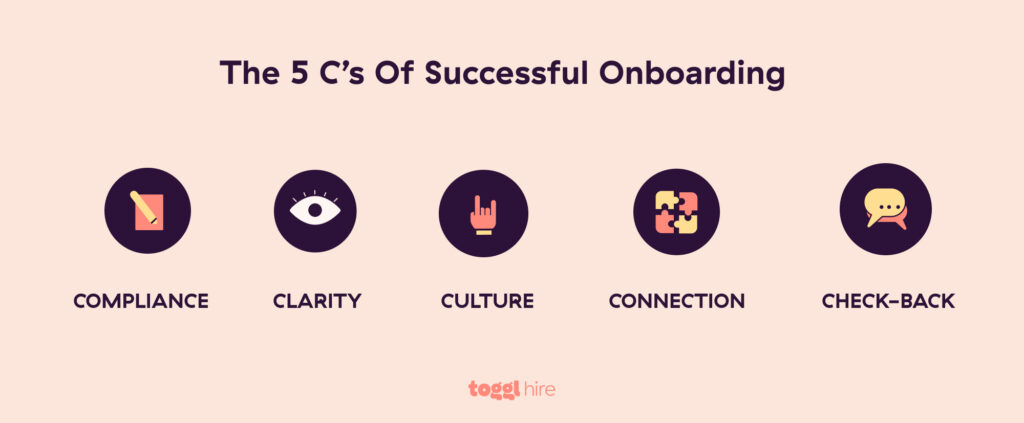
27. Offer flexible work arrangements
Flexible working is a huge deal for modern workers, with 87% of American employees taking advantage of flexible work when offered. However, flexible working models help more than just employee engagement.
Flexible hours supplement DEI efforts by accommodating different circumstances and lifestyles. For example, parents can juggle childcare and work, while neuro-diverse employees know resources are available if they need them.
Studies suggest ethnic minority workers are more likely to quit due to the lack of flexible arrangements. Flexible working should solve this issue, reducing employee turnover and boosting productivity.
28. Encourage the use of pronouns
There’s no way around pronouns in a diverse workforce. We need to use them in everyday conversation. However, misusing them is an easy way to make employees feel alienated and offended.
Asking people for their preferred pronouns is one of the most simple and impactful DEI tips. Add it to onboarding processes and company-wide profiles, and ensure all team members know how to correctly address their coworkers.
29. Measure DEI metrics
Promoting diversity is important, but you need to understand if your DEI efforts are having any effect. Valuable metrics to use in DEI strategies include:
Diversity of job candidates (maintaining a diverse talent pool)
Diversity of hire (percentage of successful candidates from different groups)
Diversity of managers (are you building a diverse leadership?)
Minority representation in the workforce
Employee turnover
Take-up of career advancement programs
Job satisfaction ratings
The biggest benefit here? Better data brings better decisions and helps you refine your DEI strategy in the future.
30. Be transparent about progress
Making a workplace culture more diverse, equitable, and inclusive requires support from every employee. This support rests on complete transparency about the nature and effectiveness of your DEI efforts and strategy.
Openly share successes when building a diverse workplace culture. DEI is a good news story with upsides for internal morale and external brand image. However, avoid excessive positivity. Resist the temptation to spin minor successes as world-changing leaps forward.
Be open about challenges, too. For example, you should be transparent about employee complaints or personal and professional development bottlenecks. Explain your strategy for solving those problems and actively promoting a more inclusive culture.
31. Keep evolving
We end our list of DEI tips with a call to action: be proactive and view DEI as a continuous journey. You cannot put diversity measures in place and expect them to function forever after.
Managing a diverse and inclusive workplace requires ongoing assessment and management. The world outside is constantly changing. Job candidates, cultural beliefs, and expectations have shifted over the years. Companies must evolve and adapt to meet the needs of a diverse workforce.
Boost diversity, equity, and inclusion with Toggl Hire
Employees want to work for companies that provide equal opportunities and enable everyone to succeed. As time passes, that preference is only likely to become stronger and more influential.
That, in a nutshell, is why DEI is at the heart of successful organizations. You’re probably nodding along by now. But where should you begin your DEI journey? Apply the tips above where they fit your business context. However, we advise clients to start with the fundamentals: creating an unbiased skills-based hiring process.
Toggl Hire’s skills tests make it easy to eliminate hiring bias in many ways. HR teams can send skills assessments to candidates, and their success depends on test results, not how candidates dress or what school they attended. You can also manage the hiring journey via our candidate pipeline — ensuring every step serves the needs of diverse applicants.
In DEI, everything flows from objective recruitment practices. Reshape the way you hire and explore your assessment options by signing up for a free Toggl Hire account.

Elizabeth is an experienced entrepreneur and content marketer. She has nine years of experience helping grow businesses and has experienced first-hand the impact of skills-based hiring in today's global, digital world.






